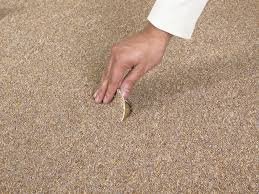 Notice a bleach stain in your carpet? Did your dog chew up the carpet? Carpet repair is usually the most affordable and convenient option. Patching your carpet should take care of most stains that are too stubborn to be removed from cleaning. Patching takes precise skill and experience. In this post we will cover the basic tips of patching your carpet but in most cases hiring a professional is highly recommended for the best results.
Notice a bleach stain in your carpet? Did your dog chew up the carpet? Carpet repair is usually the most affordable and convenient option. Patching your carpet should take care of most stains that are too stubborn to be removed from cleaning. Patching takes precise skill and experience. In this post we will cover the basic tips of patching your carpet but in most cases hiring a professional is highly recommended for the best results.
Where to get the Carpet for the Patch
Finding the right carpet to use for your patch is an important step. The best case scenario is to have remnant carpet available. Purchasing new carpet is not recommended because it is incredibly difficult to matchup carpet. Fibers, colors, aging all play a factor into the appearance of your carpet and 99% of the time new carpet will not match a previous install. If you do not have carpet remnant, do not fret. If the patch is small enough you can take a piece from the back of a closet or if you have the skill power stretching a room to cut off excess carpet is an option.
Using the Proper Tools
Once you have located your material for patching you will need the proper tools. These tools include a straight edge, knife, screw driver, scissors, seam tape, and a glue gun. These tools can all be found at your local hardware store.
Carpet Patching Steps
Now that you have your carpet remnant in and tools it is time to get started.
- Cut out the damaged section of your carpet. You will need to run your screw driver down the middle of the yarns, spreading them out before you cut. You want to avoid cutting the yarns while cutting out the section. You will want to have the square hole.
- Cut out the section of carpet for your patch. Use your straight edge to cut the back of the remnant from two sides.
- Fit in your patch the best you can
- Make two slits on the other sides to line up the backing. Use your straight edge to line up the backing and cut the edges.
- Place a piece of seam tape larger than your remnant under the carpet. Apply glue to the seam tape and the remnant you cut out for the patch. Pat your patch down and you are done!
As mentioned earlier these steps take patience and skill but small carpet patches can be performed by an average person as long as they take their time and practice. For larger patches we still recommend hiring a professional.
These tips were brought to you by Randy Randall, your expert for carpet repair in Minneapolis
